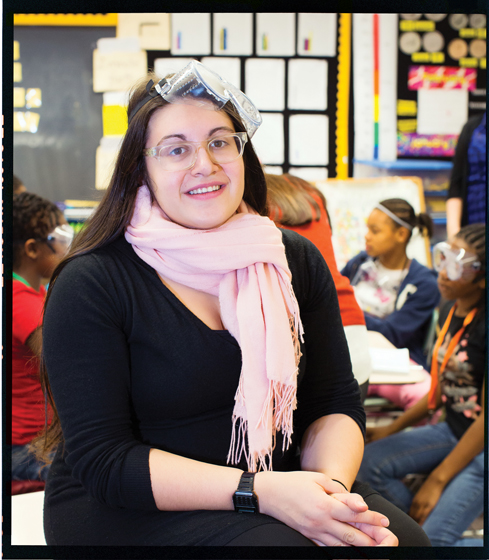 Spring 2013
Spring 2013|
Nina Marie Barbuto
Nina Marie Barbuto is keenly sensitive to how the environment shapes learning and creativity. After studying architecture at Carnegie Mellon University, the Aliquippa native moved to Los Angeles, earning a master’s degree from Southern California Institute of Architecture. Her studies in biological architecture led her to view buildings not as inert containers but as “inhabitable organisms.” Days before she graduated in 2008, the stock market crashed and “no one had jobs in the architecture world,” Barbuto explains. So she went exploring: from selling ice cream sandwiches named after famous architects to designing an apartment for actor Vincent Gallo. Then a research project about Los Angeles public schools deepened her interest in learning and environment. Returning to Pittsburgh in 2010, Barbuto found work as an architect and taught camps, classes, and workshops part-time at Carnegie Museum of Art, and, later, Carnegie Science Center. Last winter, she became program manager for its award-winning Girls, Math & Science Partnership, encouraging girls to reshape the workforce, something the Polish Hill resident knows a little something about. Also a working artist, she’s a well-known face in Pittsburgh’s start-up community, co-founding the I Made It! Market and Assemble, a new community learning space in Garfield. Barbuto views these disparate interests as related—ways for elevating the everyday to the extraordinary. Or, as she puts it, “making the vernacular spectacular.” You’re an architect, filmmaker, educator, and entrepreneur—do you have an umbrella term for introducing yourself?No. I say, “I’m Nina, nice to meet you.” I’m not saying I’m not fantastic or anything, but you don’t want someone to be intimidated if you say, “Oh, I do all of these things.” What sparked your interest in science?My dad’s a dentist and my mom was a pharmacist. I was the black sheep because I did more arts stuff, but who doesn’t like nature? I did better in biology than chemistry in school, but they present these topics as the science of it, not the engineering of it—you’re not changing things, just observing. But my parents definitely let me explore: I was always the one who got into trouble because I broke things. Was architecture school where you really started to merge art and science?I wasn’t afraid to start using biological systems in architecture— there is some precedent—but the big thing was looking at it from a metabolic standpoint. We [humans] use energy, and we have our own systems, and things translate. We give off energy and we take in energy. Why can’t we be more symbiotic with our buildings, rather than them being an encasement? Why return to Pittsburgh?My original plan was to keep going west until I got back east—but I failed! There’s so much opportunity to change things here—that was the biggest attraction. You can make huge waves without having any capital, you know? Why is crafting important to you?Something we say at Assemble is, “building confidence through making.” The thing with crafting is, you’re trying. You could be hacking any object and transforming it into your own. And it’s about the community that you’re building: Whoever buys that thing from you now has a connection with you. There’s a relationship built through objects. What’s at the core of the girls program at the Science Center?It’s about giving girls access to different role models, and helping girls to see themselves as agents in their own education. You’re learning about your own potential in STEM (science, technology, engineering, and math). Just because you like biology doesn’t mean you have to deal with squishy things; you can be a researcher. If you like math, it doesn’t have to just be math all the time; you can be dealing with money and financial analysis, or engineering. In general, we work with girls on a more intimate basis. It’s about 15 girls, and we connect them with a role model, or we visit different offices together: Google, American Eagle, Modcloth. We go to university departments, look at some rat brains—sometimes even dissect things. Really cool stuff—and, personally, I really enjoy it.
|
Under the Influence · The Shape of Things · Creatures of the Wild · The Carving Out of a Collection · Director's Note · NewsWorthy · Artistic License: Permantly Interesting · Science & Nature: Survivor's Tale · About Town · The Big Picture
 |
Copyright © 2017 CARNEGIE Magazine. All rights reserved. |

